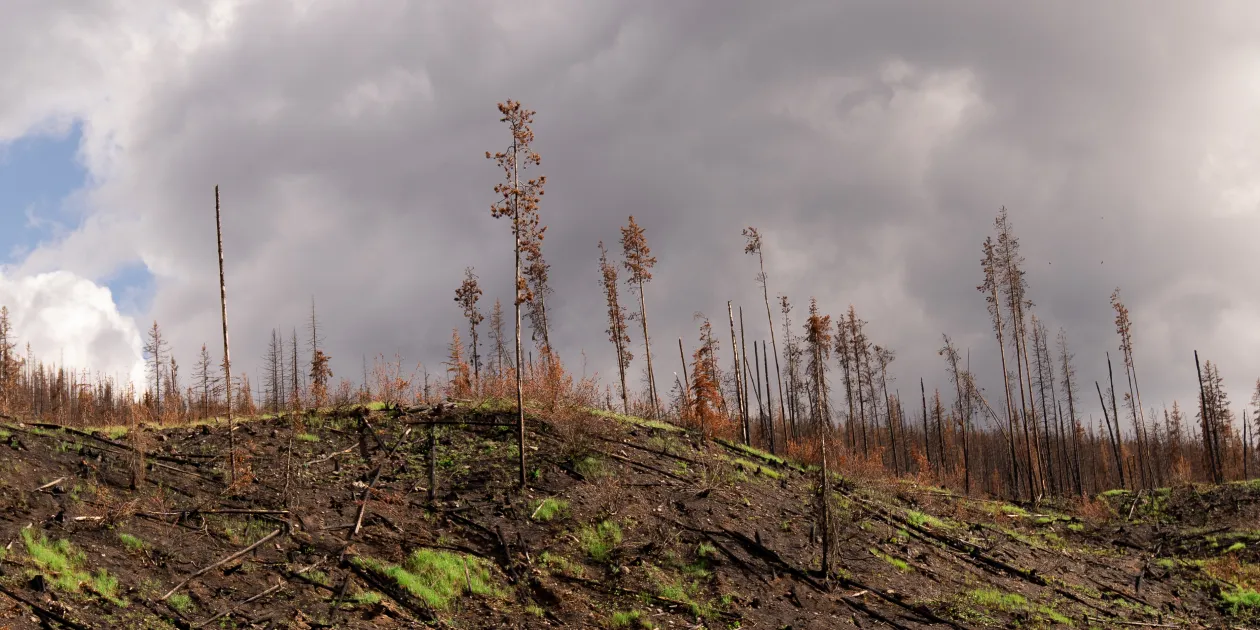Indigenous Stewardship and Wildfire Recovery after the Elephant Hill Fire
In the aftermath of the Elephant Hill Fire, Brinkman (through its subsidiary, Forest Foods Ltd.) worked with Secwepemc communities to pioneer Indigenous-led permitting for morel mushroom harvesting, while supporting Guardian programs, wildfire restoration, and riparian rehabilitation.

Project Details
Location: Secwepemc territory, BC (Elephant Hill Wildfire area)
Client / Partners: Skeetchestn Indian Band, High Bar First Nation, Secwepemcul’ecw Restoration and Stewardship Society
Project Type: Indigenous-led wildfire recovery, Non-Timber Forest Product (NTFP) management, Guardian training, riparian restoration
Scale: Elephant Hill Fire (2017); policies and stewardship programs developed in collaboration with multiple Secwepemc communities
Project Overview
Forest Foods helped design and implement a first-of-its-kind Indigenous permitting process for post-wildfire morel harvesting, raising $644,000 via the Red Cross to support program delivery. Additional initiatives expanded through the Secwepemcul’ecw Restoration and Stewardship Society, including riparian restoration projects, policy development, and Guardian training.



Impact at a Glance
- First of its kind Indigenous permitting system for morel harvesting after wildfire
- $644,000 raised via Red Cross to fund recovery efforts
- Guardian training and employment to manage NTFP harvest operations
- Riparian restoration pilots developed in the Elephant Hill wildfire area
- Policy development and community engagement through the Secwepemcul’ecw Restoration and Stewardship Society
Managing Wildfire Recovery and Forest Resources
This project supported Indigenous partners in responding to wildfire impacts by developing and implementing an understory resource management policy, including permitting systems for sustainable morel harvesting. Brinkman provided project management and capacity-building to strengthen Guardian program structures and ensure effective oversight of non-timber forest products. The work also extended into riparian restoration through survey assessments of 160 species, feasibility studies for community nurseries, and direct seeding trials to explore lower-cost restoration models
Outcomes
The Elephant Hill Fire recovery initiative demonstrated how Indigenous communities can lead wildfire recovery and resource stewardship. By piloting a permitting system for morel harvesting and launching restoration projects, Secwepemc communities established a model for Indigenous authority in land management.
Brinkman, through Forest Foods Ltd., supported these programs with management services, fundraising, and technical expertise — ensuring Indigenous partners had the resources to realize their vision.
The success of Elephant Hill also inspired broader adoption: in the following year, four additional stewardship programs across BC were modeled on this approach, expanding Indigenous-led management of wildfire recovery and Non-Timber Forest Products to new territories.
